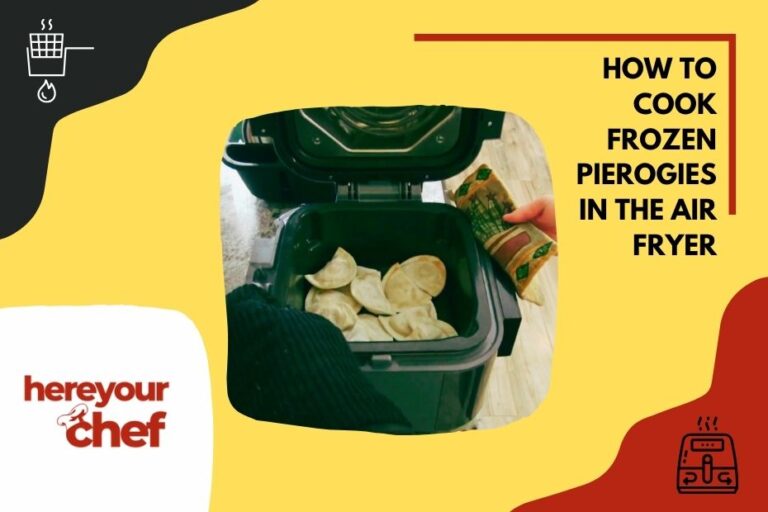The Ultimate Guide to Air Fryer Bagels: Crispy on the Outside, Soft Inside
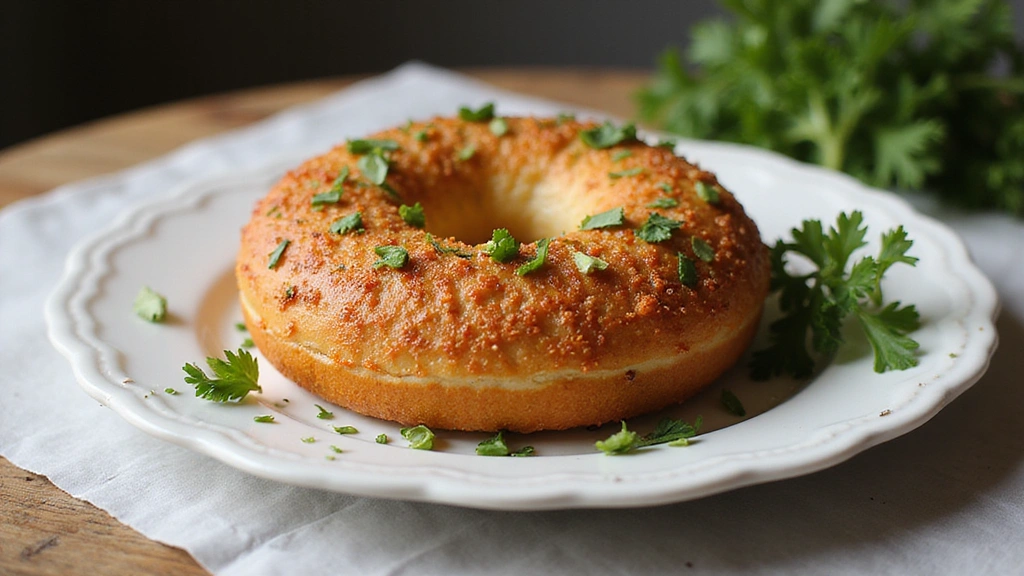
There’s nothing quite like the joy of biting into a perfectly made bagel.
Crispy on the outside and soft on the inside, these air fryer bagels are a revelation in modern cooking.
Inspired by the traditional bagels of New York City, this recipe brings the beloved breakfast staple into the 21st century with ease and efficiency.
Whether you’re a bagel aficionado or a curious first-timer, you’ll fall in love with the simplicity and flavor of this air fryer version.
It’s the ideal recipe for a cozy morning at home or an impressive brunch spread.
Get ready to enjoy bagels that rival any bakery, right from your kitchen.
The History and Cultural Significance
• The Ultimate Guide traces its origins to Eastern Europe in the 17th century, where it was originally created by Jewish communities.
• The dish evolved over decades as it crossed the Atlantic, eventually becoming the beloved New York-style bagel we know today.
• In Jewish culture, this dish traditionally appears at brunches and morning gatherings, symbolizing community and tradition.
• While many variations exist across different regions, the authentic version maintains a chewy texture and a slightly sweet flavor that sets it apart from imitations.
Recipe Overview
| Recipe Times & Servings | |
|---|---|
| ⏱️ Prep Time: | 20 minutes |
| 🔥 Cook Time: | 15 minutes |
| ⏰ Total Time: | 35 minutes |
| 👥 Servings: | 4 |
Nutritional Information (per serving)
| Nutritional Information (per serving) | |
|---|---|
| 🔥 Calories: | 250 |
| 🥩 Protein: | 9g |
| 🌾 Carbs: | 45g |
| 🥑 Fat: | 3g |
| 🌿 Fiber: | 2g |
| 🍯 Sugar: | 5g |
Essential Equipment Guide
Air Fryer: This tool is crucial for achieving the perfect crispy exterior without the need for excessive oil. If you don’t have an air fryer, a convection oven can be an alternative, but it may not yield the same evenly crisp results.
Mixing Bowls: Essential for combining and resting your dough. Look for bowls with a non-slip base to make mixing easier.
Rolling Pin: Important for shaping your bagels evenly. If you don’t have a rolling pin, a clean wine bottle can serve as a substitute.
Ingredients
For the Dough
| Amount | Ingredient | Notes |
|---|---|---|
| 2 cups | all-purpose flour | sifted for a light texture |
| 1 tablespoon | baking powder | leavening agent |
| 1 teaspoon | salt | enhances flavor |
| 1 cup | Greek yogurt | adds moisture and tang |
For the Topping
| Amount | Ingredient | Notes |
|---|---|---|
| 1 egg | beaten, for egg wash | |
| 2 tablespoons | sesame seeds | adds crunch and flavor |
Preparation Methods
Making the Dough: The dough is a simple mixture of flour, baking powder, salt, and Greek yogurt. This combination yields a soft and pliable dough that doesn’t require yeast or proofing, making it quick and easy to prepare.
Shaping the Bagels: After resting the dough, it’s important to roll it evenly to ensure uniform cooking. This technique helps achieve the classic bagel shape and texture.
Applying the Egg Wash: An egg wash is essential for giving bagels their glossy finish and helping toppings adhere. Brush lightly to avoid drips or uneven coating.
Step 1: Prepare Ingredients
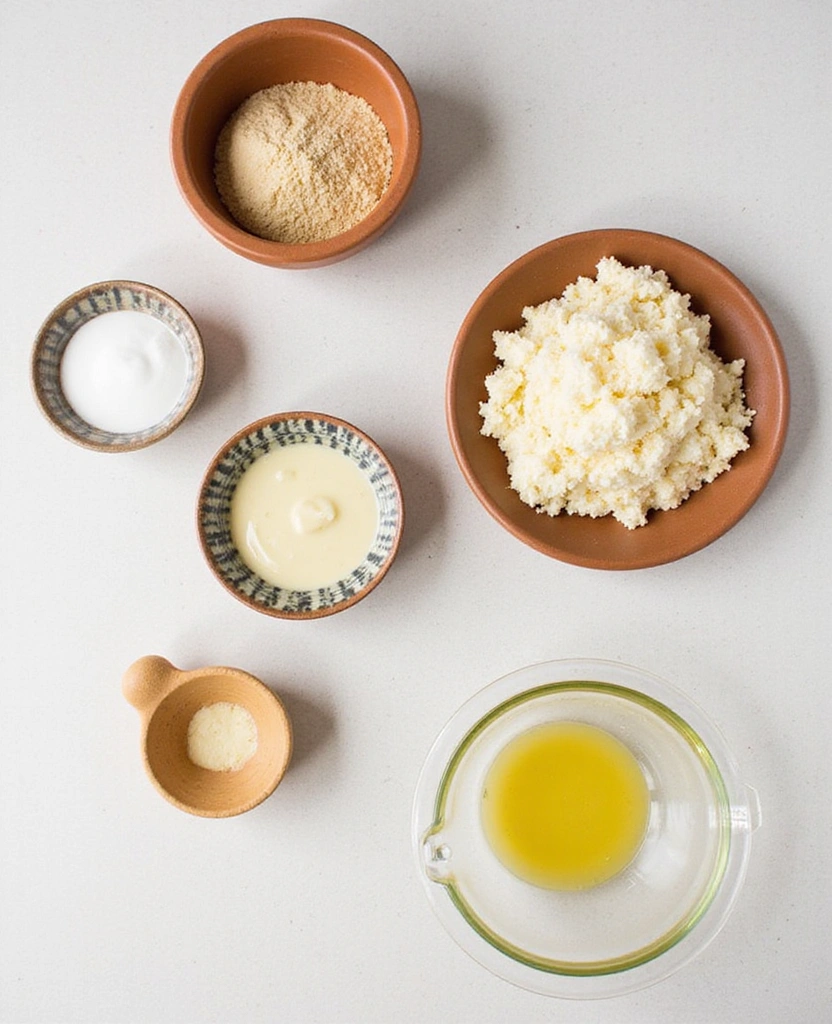
Gather all your ingredients, ensuring everything is measured accurately.
Sift the flour to remove any lumps and ensure a smooth dough.
Keep the Greek yogurt at room temperature for easier mixing.
Preheat the air fryer to 350°F to get it ready for cooking.
Step 2: Make the Dough
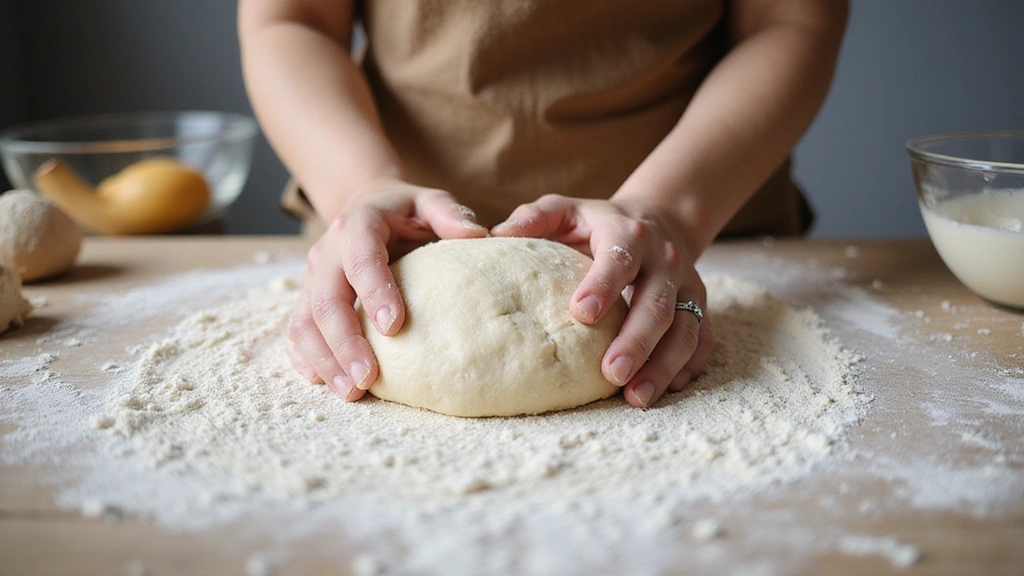
In a large bowl, mix the flour, baking powder, and salt.
Add the Greek yogurt and stir until a dough forms.
Knead the dough on a floured surface until smooth and elastic.
Cover the dough with a damp cloth and let it rest for 10 minutes.
Step 3: Shape the Bagels

Divide the dough into four equal portions.
Roll each portion into a ball and then into a rope.
Bring the ends of each rope together to form a circle, pressing to seal.
Place shaped bagels on a parchment-lined tray.
Step 4: Apply the Egg Wash
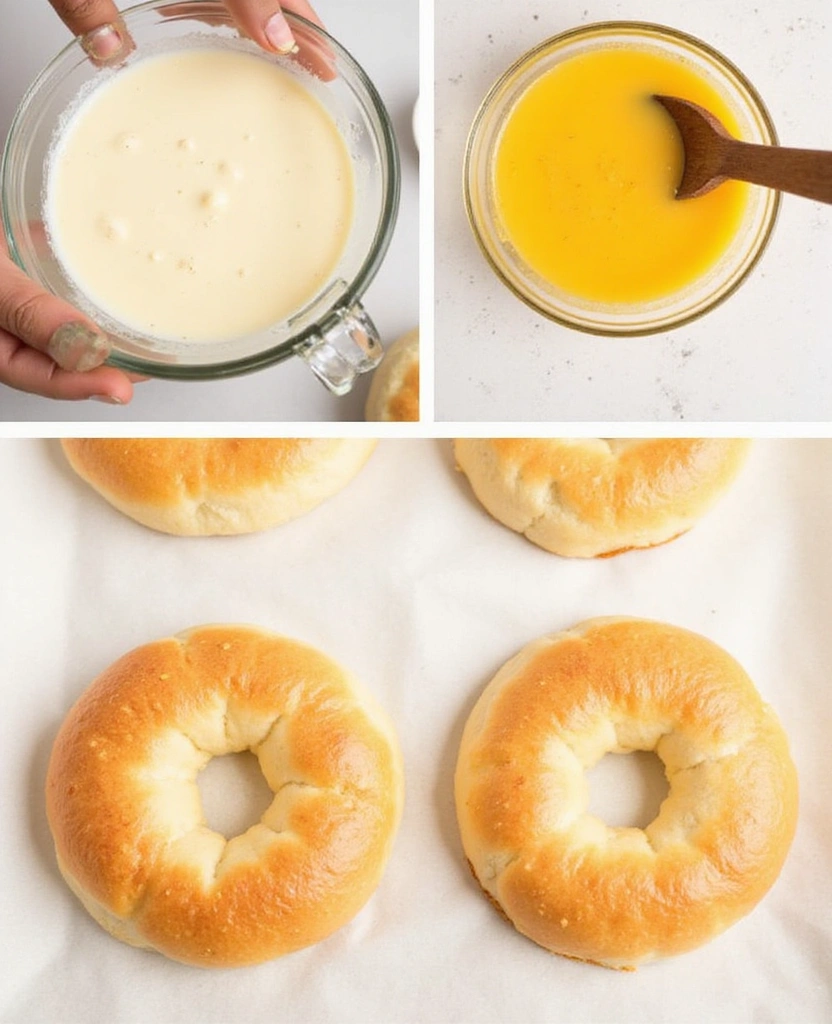
Beat the egg in a small bowl until smooth.
Using a pastry brush, lightly coat each bagel with the egg wash.
Ensure an even layer for a glossy finish.
Sprinkle sesame seeds over the top of each bagel.
Step 5: Preheat the Air Fryer
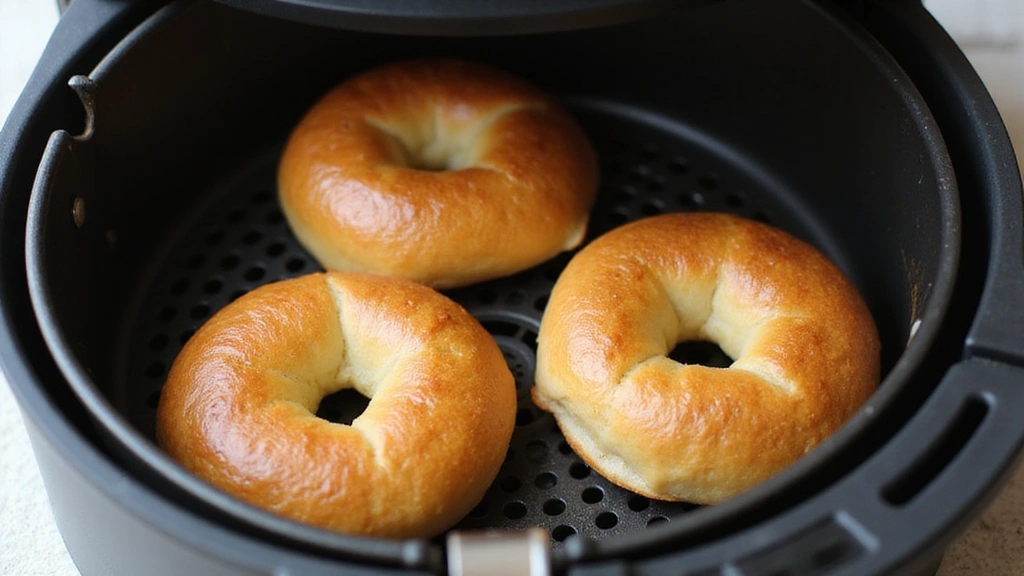
Set your air fryer to 350°F and let it preheat for about 5 minutes.
This ensures the bagels start cooking immediately and evenly.
Prepare the air fryer basket by spraying it lightly with oil.
Place each bagel in the basket, ensuring they don’t touch.
Step 6: Cook the Bagels
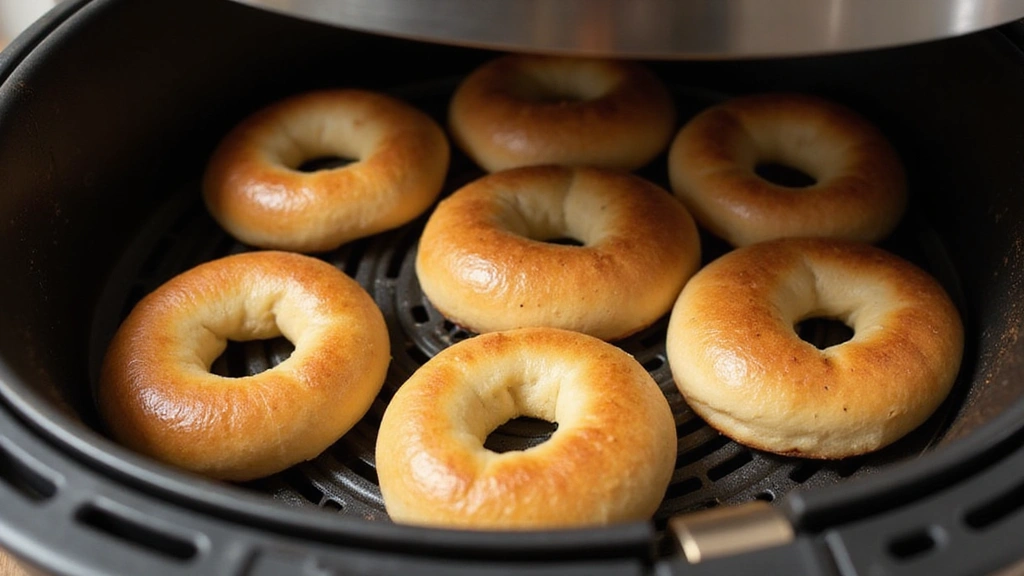
Place the basket in the air fryer and set the timer for 15 minutes.
Check the bagels halfway through and rotate the basket for even cooking.
Continue cooking until the bagels are golden brown.
Remove the basket carefully to avoid burns.
Step 7: Cool the Bagels

Transfer the cooked bagels to a wire rack immediately.
This allows them to cool without becoming soggy on the bottom.
Let them rest for at least 5 minutes before serving.
Admire the shiny, crunchy exterior and soft interior.
Step 8: Serve and Enjoy

Slice the bagels with a serrated knife for even halves.
Spread your favorite toppings or serve them plain.
Enjoy the delightful contrast of textures and flavors.
Share with friends or family for a cozy meal.
Critical Timing and Temperature Guide
Preheating the Air Fryer: Preheat to 350°F for 5 minutes. Ensure the air fryer is hot to start even cooking; avoid undercooked centers by maintaining this temperature.
Cooking the Bagels: Cook for 15 minutes at 350°F, rotating the basket halfway through. Golden brown tops indicate doneness; avoid overcooking to prevent a dry texture.
Cooling: Allow bagels to cool for at least 5 minutes on a wire rack. This prevents moisture buildup underneath and maintains the desired texture.
Pro Tips for The Ultimate Guide
• Ingredient Selection: Use full-fat Greek yogurt for the best texture and flavor, as it provides moisture and richness.
• Preparation Secret: Let the dough rest for 10 minutes before shaping to relax gluten and make handling easier.
• Temperature Management: Ensure all ingredients are at room temperature for easy incorporation and consistent dough.
• Texture Enhancement: Avoid over-kneading; a gentle hand ensures a tender crumb.
• Flavor Layering: Add a pinch of sugar to the dough to enhance sweetness and browning.
• Make-Ahead Strategies: Shape bagels and refrigerate overnight; bake fresh in the morning for convenience.
• Restaurant-Quality Finishing Touches: Use a variety of seeds or herbs as toppings for a gourmet touch.
• Equipment Optimization: Rotate the air fryer basket halfway through cooking to ensure even browning.
Troubleshooting Common Issues
• Texture Too Dense: This occurs if the dough is over-kneaded. Recognize by lack of rise during cooking. Fix by kneading gently next time and ensuring dough is not too dry.
• Bagels Not Browned: Insufficient egg wash or low cooking temperature. Check during cooking for color; adjust air fryer settings if needed.
• Uneven Cooking: Caused by overcrowding in the air fryer basket. Space bagels apart and rotate for even airflow.
• Bagels Stick to Basket: Insufficient oil spray on the basket. Ensure basket is well-greased before placing bagels.
• Bagels Collapse After Cooking: Happens if dough is too moist or undercooked. Adjust dough consistency by adding more flour and ensure full cooking time.
Variations and Regional Differences
• New York Style: Often includes malt syrup in the dough for a distinct flavor and is traditionally boiled before baking. This method gives a chewy texture unique to NYC.
• Montreal Style: Made with honey in the boiling water and baked in a wood-fired oven, resulting in a slightly sweeter and denser bagel.
• Whole Wheat Variation: Substitute half the all-purpose flour with whole wheat flour for a nuttier flavor and added nutrition.
• Gluten-Free Option: Use a gluten-free flour blend, adjusting moisture as necessary for a similar texture.
Food Science Behind the Recipe
• Leavening Agents: Baking powder acts as a leavening agent, causing the dough to rise without yeast. It releases carbon dioxide when mixed with moisture and heat.
• Protein Structure: Gluten development provides elasticity and structure. Over-kneading can lead to dense bagels by overdeveloping gluten.
• Browning Reactions: The Maillard reaction during air frying gives bagels their brown color and complex flavor. Egg wash contributes to this by providing sugars and proteins.
Frequently Asked Questions
What’s the most common mistake people make when preparing air fryer bagels? Over-kneading the dough, which can result in a dense texture. Knead just until ingredients are combined and dough is smooth.
Can I use a different type of flour? Yes, but results may vary. Whole wheat or gluten-free flours require adjustments in moisture content.
How do I store leftover bagels? Store in an airtight container at room temperature for up to 2 days. For longer storage, freeze and toast before serving.
Can I add other toppings? Absolutely! Try poppy seeds, dried onion flakes, or coarse salt for variety.
Is it necessary to preheat the air fryer? Yes, preheating ensures the bagels cook evenly and develop a crisp exterior.
Can I make mini bagels with this recipe? Yes, divide the dough into smaller portions and adjust cooking time accordingly.
Why did my bagels stick to the basket? Lack of oil spray. Ensure the basket is well-greased before placing bagels.
Serving and Presentation Guide
• Traditional Presentation: Serve bagels sliced with cream cheese, lox, capers, and red onion for a classic brunch offering.
• Modern Twist: Use bagels as a base for breakfast sandwiches, with eggs, avocado, and bacon.
• Party Platter: Arrange assorted bagels with a variety of spreads and toppings for a self-serve bagel bar.
• Rustic Style: Present whole bagels in a bread basket lined with a linen napkin for a warm, inviting look.
Conclusion
The art of making perfect air fryer bagels is now at your fingertips.
With a few simple steps, you can enjoy homemade bagels that are both delicious and impressive.
Don’t be afraid to experiment with toppings and flavors to make them your own.
Give this recipe a try and bring the taste of a classic bakery into your home.




